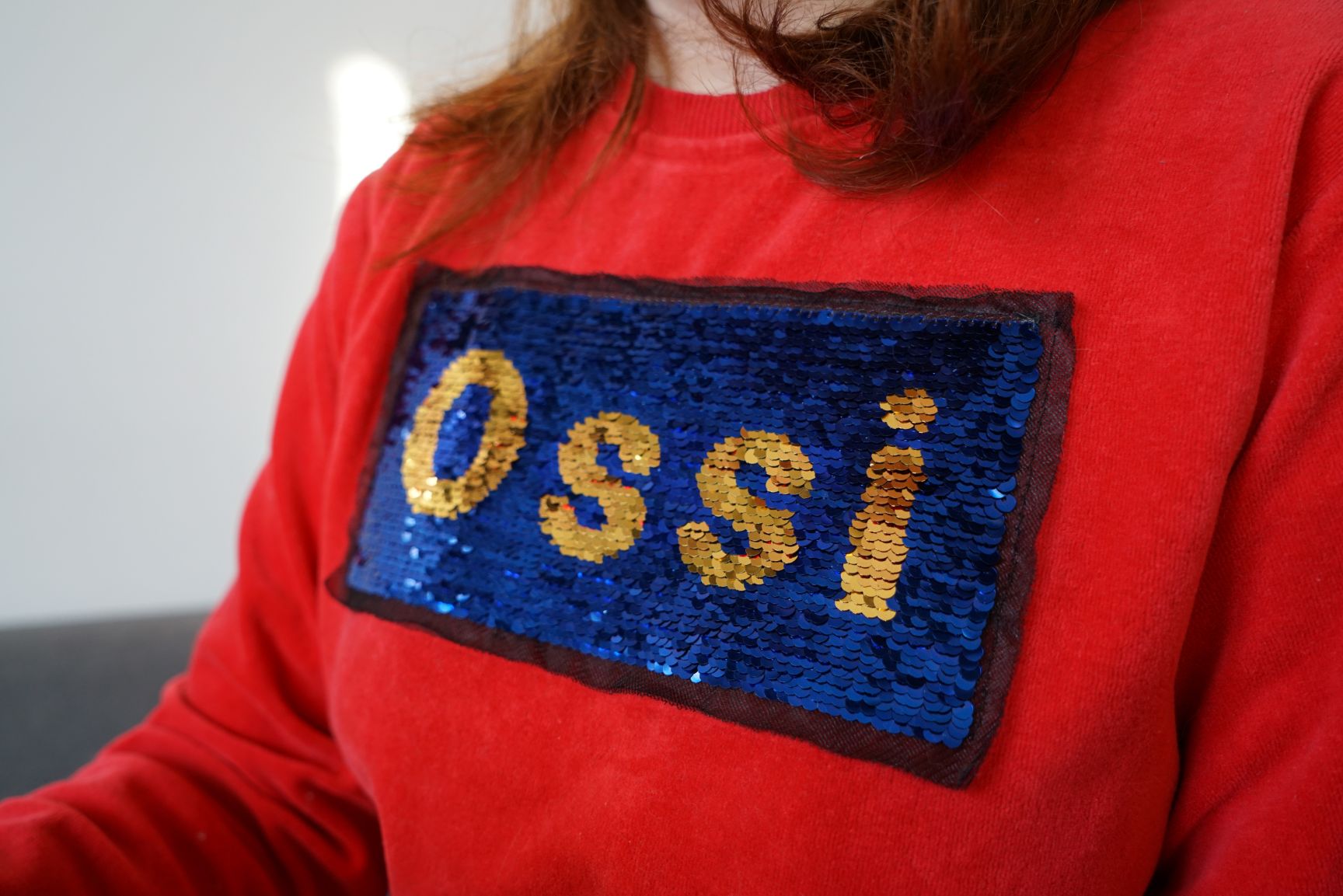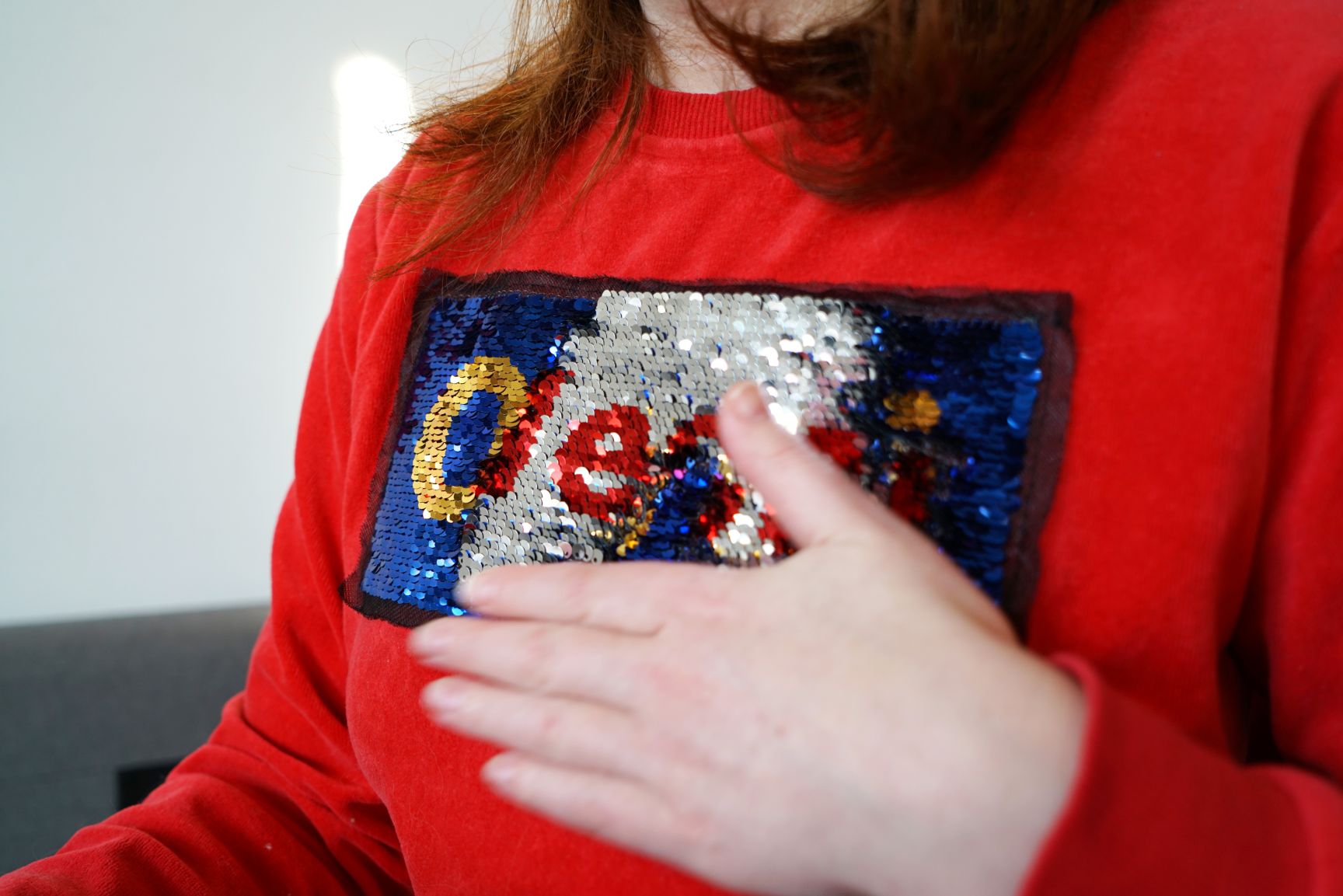OSSI/WESSI Nähcafe - Bring Your Own Pulli (English)
In 1960, the Amerika Haus, with its glass facade, was described by the Denver Post as the best-placed propaganda center in the world. The »democratic utopia« of the USA was meant to be represented by this generous glass facade on the ground floor, symbolizing openness and transparency, and the promise of a cultural offering for all of Berlin. The exhibition Dream on - Berlin, the 90s provides an opportunity to discuss the visions, utopias, and uncertainties of the 1990s, beyond the confrontations of the Cold War.
Gallery with 3 images: »«

Ossi © Nadja Buttendorf
1/31/3 Ossi
© Nadja Buttendorf
Oessi © Nadja Buttendorf
2/32/3 Oessi
© Nadja Buttendorf
Wessi © Nadja Buttendorf
3/33/3 Wessi
© Nadja ButtendorfPlaying with identity and perspective, the artist Nadja Buttendorf invites participants to embroider sweaters and shirts with OSSI/WESSI WENDEpailletten. With one swipe, OSSIs turn into WESSIs and WESSIs into OSSIs. With needle and thread, fabrics and voices come together in the Nähcafé, fostering exchange and community. Through this collective handicraft, a moment is created to discuss one's own and others' attributions and to share stories from East and West Berlin.
For spaces transform through gestures of hospitality, friendship, and understanding. Therefore, the Nähcafé redefines the historic site of ideologizing with an invitation to meet and get closer. Buttendorf contrasts both the democratic utopia of the Amerika Haus and the Berlin utopias of the 1990s with people and their personal stories. She counters these constructs with a moment of sociality that creates space for the deconstruction of attributions and for ambivalence. At the same time, the gathering at the Amerika Haus is emblematic: the collective movements and actions in these spaces generate new East-West images, images of the search for personal, mutual—thus new—relationships. These allow for the hope of recognizing others and differences; they foster cohesion and feelings of belonging, which not only represent democratic utopias but could actually strengthen democracy.
OSSI/WESSI Nähcafe is part of the performance series Tracing Influence: Intervening in Western Cold War Architecture. The series is dedicated to four Cold War architectures in Berlin that bear witness to the institutionalization of US power in the promotion of educational institutions and the dissemination of knowledge. Various artists engage performatively with these architectural spaces and their site-specific histories to develop new forms of gathering that question the power dispositif of their past.
Tracing Influence was conceived by Kirsten Maar, Sophie Schultze-Allen, Hannah Strothmann and Luise Willer with the support of Mariama Diagne, Friederike Hartge, Martina Kutsch and Giulia Weis as part of the Collaborative Research Center (CRC) Intervening Arts at the FU Berlin, in cooperation with the Central State Library Berlin and the Haus der Kulturen der Welt (HKW) Berlin.
